15 Multiple Gender Identity Flags: How Well Do You Know Them?
In the last few decades, people have become more aware of different gender identities.
Individuals have also created flags as symbols of pride in diverse gender identities that seek to recognize distinct identities.
This article intends to explain what the 15 multiple flags for gender identities represent with colors, styles, and other vital features.
Recognizing and valuing these varying identities goes a long way in bringing about an inclusive and tolerant world.
15 Multiple Gender Identity Flags
Here are the 15 multiple gender identity flags:
Sexual Flag
The asexual visibility and education created the asexual flag network in 2010 for people, also referred to as individuals who experience no or minimal sexual feeling.
The flag comprises four horizontal striped colors, and each color signifies or means something within the community.
For instance, the black stripe on top represents asexuality, followed by grey, representing the grey area between sexual and asexual.
The color that follows is a white stripe, which represents the support and inclusion of allies and non-sexual partners.
Finally, the bottom purplish stripe represents the unity and solidarity in the asexual community.
LGTBQ+ pride flags are numerous; this one stands among such flags to honor and enlighten various sexual orientations and gender identities.
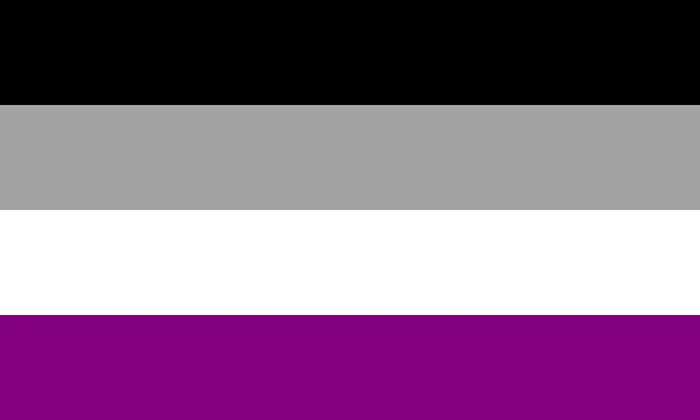
Bear Flag
The Bear flag is meant to signify the bear constituent of the rainbow community that incorporates gays and bi-sexual who project more masculinity in them, such as having additional weight and more pubic hair.
The founders of the bear flag incorporated seven alternatingly colored stripes going horizontally.
The color at the top is brown, which represents the color of a bear-animal- forms the upper stripe.
Light Brown is the second one, which indicates cub. The next color is beige, which represents the otters.
Fourth of these lines are white, and they represent polar bears.
The next stripe, the fifth on the line, is grey, signifying silver foxes.
The sixth dark stripe corresponds to leather and BDSM.
Finally, the last stripe is blue, meaning either water or pure.

Bisexual Flag
The Bisexual Flag, sometimes referred to as the Bi-Flag for people who are attracted to any gender is composed of three equally sized horizontal layers.
The pink stripe at the top part of the flag is an indicator of liking homosexuality.
Purple, which represents the attraction between males and females, makes up the color stripe in the middle, which is a mixture of both colors.
There is a pale blue shaded stripe at the bottom, and this indicates same-sex attractions.

Demisexuality Flag
These individuals consider themselves demisexual and claim that they do not have a sexual attraction for other people until a strong bond of emotions develops between them.
The demisexual flag consists of three horizontal stripes; the white stripe at the outer side indicates peace and sexuality, while the purple stripe in the middle symbolizes communality and sexual desires.
The second one is a green stripe, meaning sexual orientations, and the last one is a grey stripe for sexes and asexual spectrums.
The demisexuality flag also bears an inward-pointing black triangle with no sexual attraction symbolism.
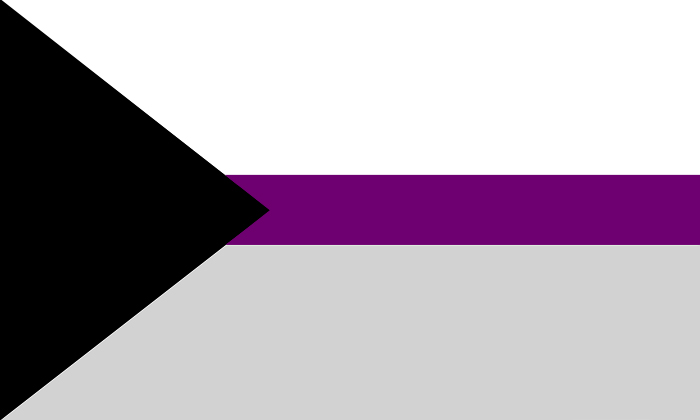
Genderfluid Flag
The gender-fluid flag represents people who are not static, and their genders change now and then.
The flag consists of five equal-sized horizontal strips, each with a distinctive meaning based on its color.
The female component in the flag is depicted by light pink at the top of the flag, while the inclusive nature of both genders is seen in white.
The middle color is purple, indicating that there are both male and female counterparts.
Black comes next after purple, which means there are no genders, and finally blue strip at the end of the flag denotes male characteristics.

Genderqueer Flag
A genderqueer flag is a representation of people beyond conventional gender expectations.
It has a lavender strip on top which is a mixture of blue and pink colors representing express queer identity, androgyny, females and males.
The white stripe is located in the middle of the flag, and it symbolizes the inclusion of all genders.
The stripe at the bottom is a unique color- dark chartreuse green, which represents genders beyond the binary spectrum, and it also represents individuals who do not have a gender or the notion of all genders.
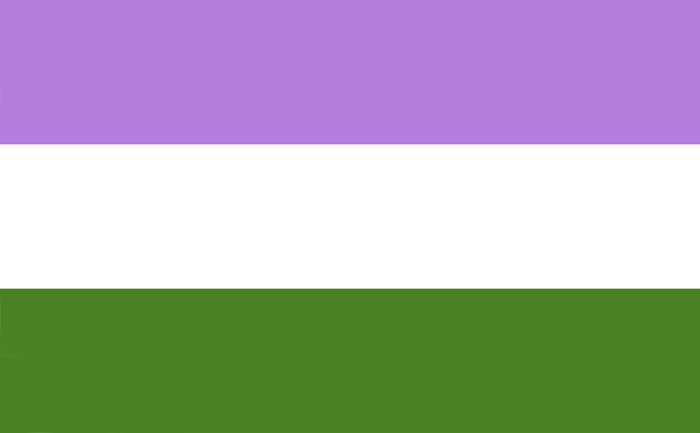
Intersex Flag
The intersex flag is designed to promote acceptance of people who have a physical sex characteristic that does not fall within the male or female categorization.
The flag comprises two colors, and they use yellow as a background color, which signifies the third gender.
Also, the flag has a symbol of an inter-sex birth, which appears as a circle in purple and is centrally located.
Besides, the circle represents totality and integrates the variability of intersex people.
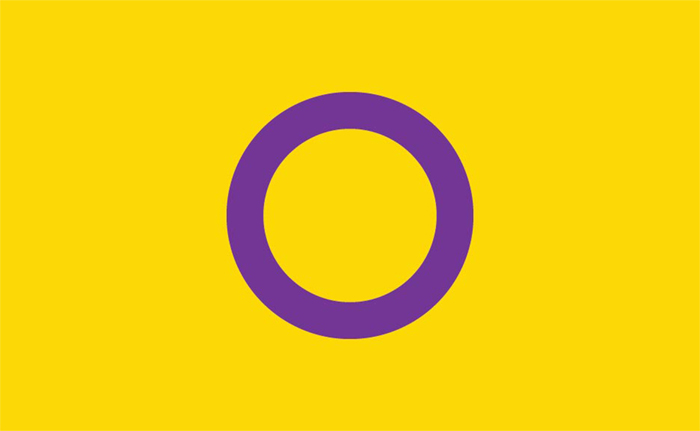
Leather Flag
The leather flag is one of the recognizable marks of the leather subculture in the LGBTQ+ society.
It is called the horizontal flag, which consists of three bands with black at the top band and in the lower band, representing the connection between leather and BDSM.
It has a blue middle stripe, which represents the denim that leather lovers usually embrace.
ThisFlagg allows people within the leather subculture to identify with each other’s lifestyle by showing their pride.
It is one of the many colorful and symbolic LGBTQ+ flags woven through the fabric of pride and acceptance.
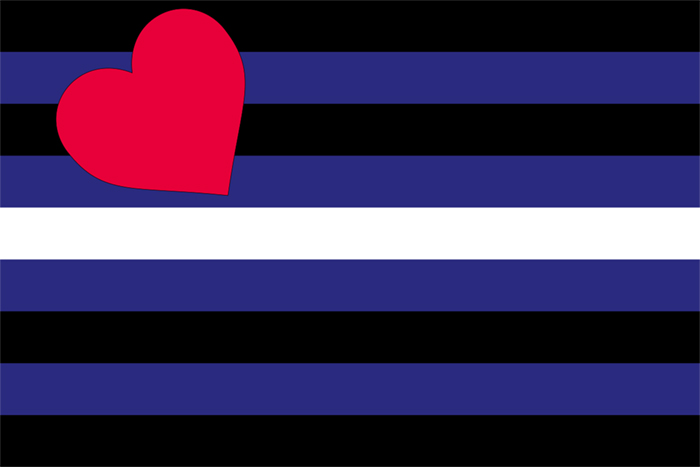
Lesbian Flag
Feminist symbolism manifests itself in the strong women’s pride and visibility flag, also referred to as a lesbian flag.
Each of the colors on these three vertical stripes is symbolic.
Orange top-stripe denotes non-conforming genders, signifying variations in lesbian identities.
The second white strip located in the middle represents the uniqueness and purity of lesbianism that clearly distinguishes the characteristics of this community from other heterosexual groups.
Ultimately, the base stripe at the end is bright pink, which symbolizes the mutual love and sexual attraction between women.
These are the colors on the lesbians flag, which combine to remind the lesbians about their strength, love, and union.
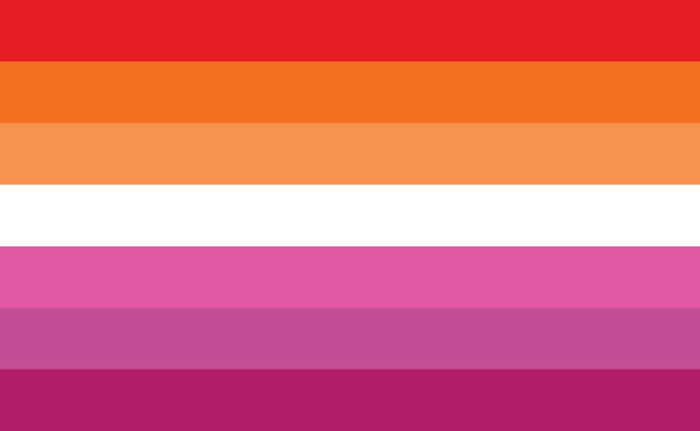
LGBT Flag
Often referred to as the rainbow flag or pride flag, the LGBT flag is an iconic symbol for lesbians, transgenders, gays, queers, and bisexuals.
ThFlagag comprises six different colors, which are arranged horizontally, each color having a different meaning.
The color at the top of Flagg is a red stripe, which reflects life; it is followed by an orange stripe, which represents healing, followed by a yellow stripe denotes sunlight;
the green stripe represents nature, the blue stripe represents calmness, and the purple stripe embodies spirits.
Collectively, these colors produce a striking visual image of the multicultural and all-inclusive society that thiFlagag symbolically represents.
The LGBT flag, in strong meaning, remains a torch of support to the world LGBT community.

Non-binary Flag
A non-binary flag represents those people who are not associated with male and female gender binaries typical in most societies.
These four horizontal stripes, with the outermost one being yellow, stand for the non-binary people who embrace all genders.
The two inner stripes serve specific symbolic purposes: a white stripe symbolizes people with many or multiple genders, and the purple stripe is for a combination of the male and the female gender.
The color at the bottom of the flag is black, which symbolizes gender undefined or conflicted.
Like other pride flags for the LGBTQ community, this flag illustrates the power of diversity in the community.
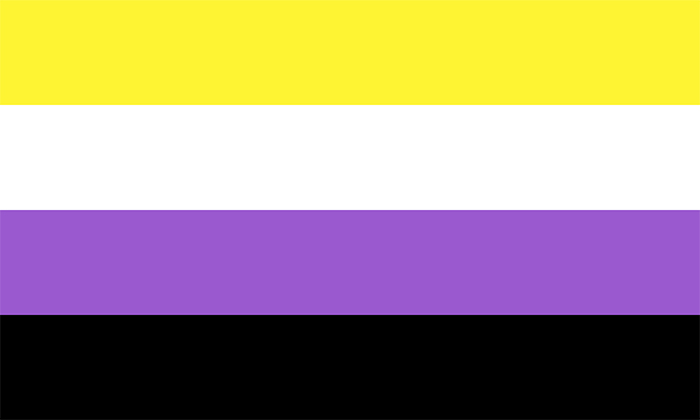
Pansexual Flag
The pansexual flag portrayed as three horizontal stripes symbolizes its ability to attract every individual in disregard to their gender identity.
ThFlagag consists of three colors, with pink on top and blue at the bottom, symbolizing both attraction towards the female gender and the male one.
The yellow middle stripe goes beyond the binary by suggesting a sexual interest in genders other than just men and women.
Pansexuals feel welcomed by the bold flag colors in the LGBTQ+ community.
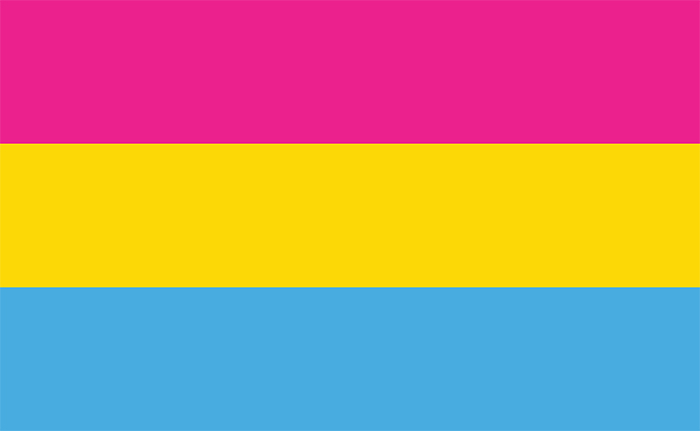
Polyamory Flag
Polyamory refers to the act of getting sexually or romantically involved in multiple relationships that are consented to by the participants.
The polyamory flag represents the foundations and difficulties associated with this kind of relationship.
The flag is made up of three-color stripes that each represent some features of polyamory.
Openness, truthfulness, and reliability are key to having successful polyamorous relationships, and they are all represented by a blue stripe on the top.
In a romantic relationship, the middle red stripe symbolizes love and passion, which are crucial components.
Finally, the darkest black stripe at the base signifies the social stigmatization of and difficulties experienced by those who practice polyamory.
This is a powerful symbol of the flag for polyamories, which explains understandably the peculiarities of polyamory relationships.

Polysexual Flag
PolysexuaFlagag refers to people whose orientation is to several sexes and not all genders, like pansexual individuals.
The flag includes three horizontal bends–pink, yellow, and blue.
Homosexual individuals attracted to the pink stripe symbolize women, and individuals attracted to the blue stripe represent men.
The yellow strip at the center denotes that one is attracted to gender categories beyond male and female.
The polysexual flag is a symbol that helps such individuals identify themselves within the LGBTQ community since it promotes diversity in sexual orientation.
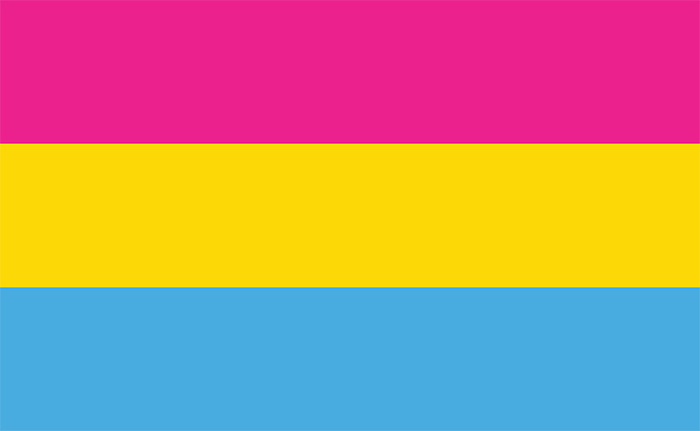
Transgender Flag
TFlaglag has five amazing horizontal stripes with three primary colors.
The outermost color at the top and bottom is light blue, which represents baby boys.
Color pink follows the blue color stripe both at the inner top and bottom, which symbolizes baby girls.
It has a center white stripe, which represents people who are beyond the typical male-female dichotomy.
Transgender flags display colors that remind people about inclusiveness in our society, no matter what gender they are.
It is still serving as a guide for the LGBTQ+ people, both within the community and further afield.

Conclusion
The ability to recognize gender identity flags promotes inclusiveness while raising societal awareness.
Embracing different colors, designs, and meanings attached to evFlagflag makes space for people who have different gender identities.
These flags act as sources of pride, community, and representation, making people belonging feel less misrepresented.
It is time we celebrate and acknowledge them for having the courage to raise their voices to be heard and seen like the rest.
Everyone should feel special and equal despite having a different gender identity.
Learn More: Flags of the LGBTIQ Community

 Basic Packers
Basic Packers Pack & Play
Pack & Play STP
STP